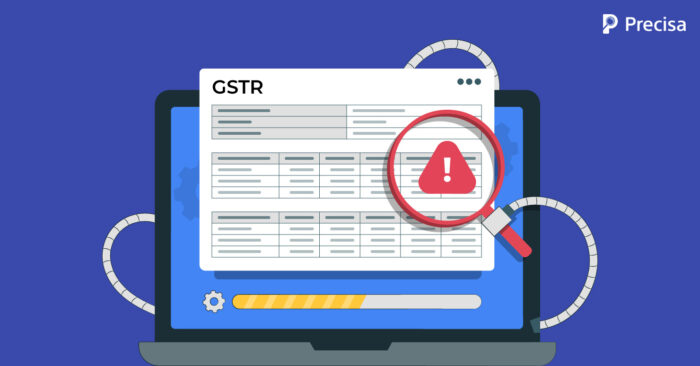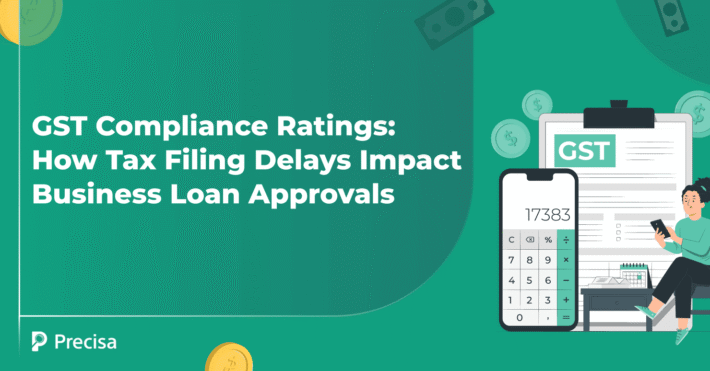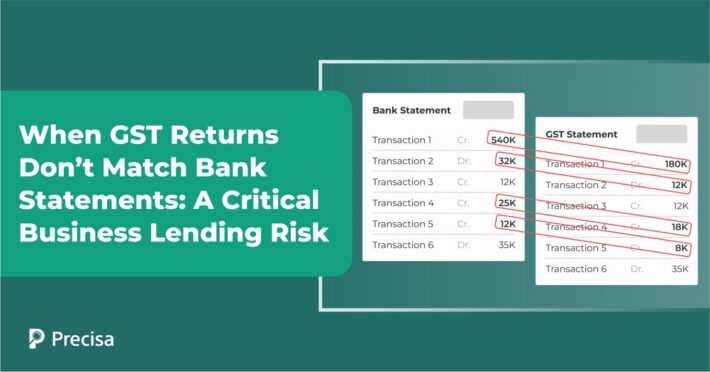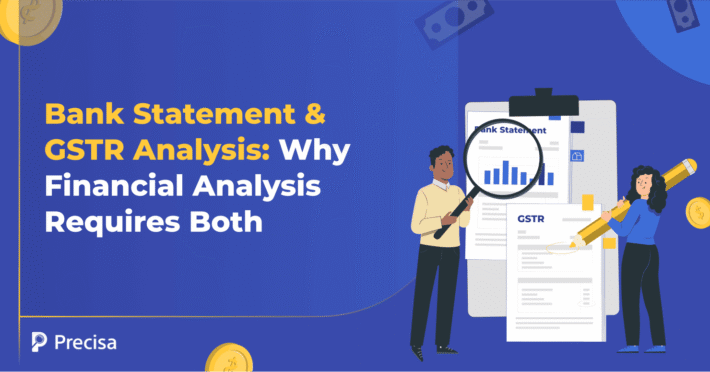Red Flags in GSTR Analysis: What Lenders Should Look For When Reviewing Returns
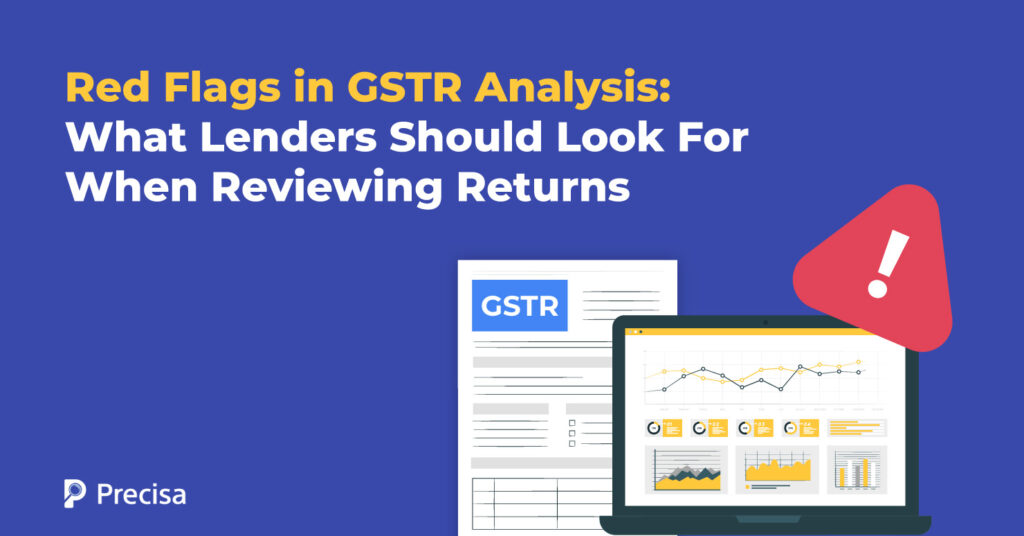
As the world becomes increasingly interconnected and digitised, each transaction and interaction generates valuable data, which, if harnessed well, can offer invaluable insights and aid decision-making.
One such revolutionary use of data is the leveraging of Goods and Service Tax (GST) data by lenders to make more objective lending decisions. GSTR analysis helps lenders employ real-time analysis to improve their risk assessment and lending strategies.
GST was introduced in July 2017 and revamped India’s indirect tax structure. On 31 March 2022, India had 1.36 crore active GST registrations; this number highlights the large data pool available for analysis for various stakeholders.
Let us explore the benefits of GSTR analysis for lenders and the red flags they should focus on when they use GST data analysis for decision-making.
The Significance of GST Data for Lenders
The GST is a consumption-based tax that has reorganised India’s tax system. It has brought multiple indirect taxes like the VAT, Octroi and Service tax under one umbrella to bring more transparency and uniformity in the taxation system.
- The reformed tax system improves tax compliance in the entire tax chain, and a record exists for every transaction (sales and purchases).
- These records are a treasure trove and generate valuable data for fintech companies to assist them in credit assessment.
- Reporting of business transactions by businesses provides a comprehensive view of its operations, cash flows, and expected growth.
Traditionally, lenders rely on parameters like credit score, applicant’s credit history and financial statement analysis for risk assessment. All these aspects offer the lender insight into the applicant’s financial health and creditworthiness; integrating GST analysis into the credit assessment process provides a deeper understanding and a more comprehensive picture to lenders.
Benefits of the GSTR Analysis for Lenders
GSTR Analysis offers the following benefits for lenders:
1. Better Risk Assessment
It helps analyse the borrower’s transaction patterns, tax compliance history, and financial ratios derived from GST data; this helps lenders improve their risk assessment process.
Lenders gain an in-depth understanding of the revenue streams, expenditure patterns, and overall financial health and extend credit to those with strong repayment capabilities.
2. Portfolio Quality Improves
Lenders can improve their portfolio quality by analysing precise and comprehensive data available through GSTR analysis. Reduced default risks lead to better profitability for lenders.
3. Identify Early Warning Signals
GSTR analysis detects anomalies and irregular patterns in financial data and acts as an early warning system. Lenders can take practical action and address potential issues before they become larger problems and lead to default.
4. Improved Efficiency
Automating GSTR analysis streamlines the process of collecting and analysing financial data. Reduced manual labour helps lenders save costs and time for lending institutions.
5. Offer Customised Solutions
The analysis also enables lenders to get a more accurate and personalised applicant profile and offers their applicants customised solutions.
Red Flags in GSTR Analysis: What Lenders Should Look For When Reviewing Returns
Here are some vital aspects to consider when reviewing returns:
1. Keep a Look Out for Inconsistencies and Discrepancies
Disparities in returns can signal potential issues. Some of them are:
- Mismatches, especially, extensive ones, between GSTR-1 (sales) and GSTR-3B (summary) could be indicators of inflated purchases and underreporting of sales.
- Lenders should monitor inconsistencies in ITC (Input Tax Credit) claimed across GSTR-2A and GSTR-3B, as they could point to potential misuse of ITC or fake invoices.
- If there are substantial variations in GSTR-3B vis-a-vis previous periods, the lender should try to investigate it in detail.
- The applicant should be able to explain sudden unexplained decreases or increases in turnover.
- Frequent late filings are indicators of financial difficulties or compliance-related issues.
2. Monitor Absent or Incomplete Information
Incomplete GST returns or filings where information is missing hamper accurate analysis by lenders and raise concerns about the transparency of the business operations.
Cloud-based bank transactions and financial data analytics solution Precisa offers GSTR Analysis. It can assess the data, detect cyclical transactions and other anomalies, and assign an overall creditworthiness score called Precisa Score to help lenders identify indicators of trouble.
- If the applicant files no returns despite conducting business activity, it points to probable tax evasion.
- Financial numbers and ratios like profit margins, tax liabilities, and expense ratios are indicators of a business’s overall health. If these are excessively high or low compared to industry standards, the lender needs to scrutinise them more closely.
3. Scrutinise Unusual Activity
- Frequent changes in suppliers or customers of the business can point toward fictitious transactions or dealings with shell companies.
- Similarly, an unusual concentration of transactions with one entity or a few entities should also raise red flags, and it could be an attempt to manipulate input tax credit claims.
- The company might indulge in under-invoicing or fictional exports if the business reports export transactions without corresponding receipts in foreign currency exchange records.
4. Some More Aspects To Keep In Mind
- Lenders should cross-check and compare GSTR data with audited financial reports, bank statements and other appropriate documents.
- Lenders also need to stay up-to-date with GST regulations, as any changes may impact what can be considered red flags.
- Circular transactions involving multiple parties that try to inflate sales or claim fake input tax credit claims should also raise concern for the lender.
Key Takeaways
GSTR analysis offers diverse benefits to lenders and improves their decision-making. Lenders can improve their efficiency, assess their risk better, improve their portfolio quality, identify early warning signals and offer their borrowers customised solutions.
Lenders need to keep an eye out for the following red flags when they carry out GSTR analysis: look for inconsistencies and discrepancies, absent or incomplete information and scrutinise any unusual activity.
Finding a digital solution that integrates with the existing systems and helps lenders carry out GSTR analysis smoothly is crucial for lenders. The GSTR Analysis tool by Precisa has a combination of features that provide real-time evaluation, bank statement insights, and seamless account aggregator integration. It simplifies and speeds up the process through automation and provides actionable insights.
Request a free demo today!

